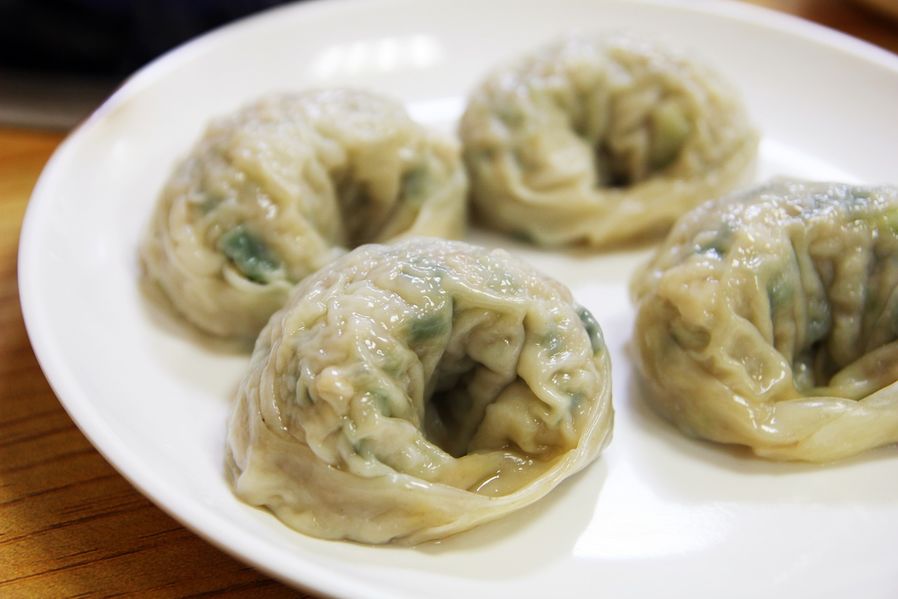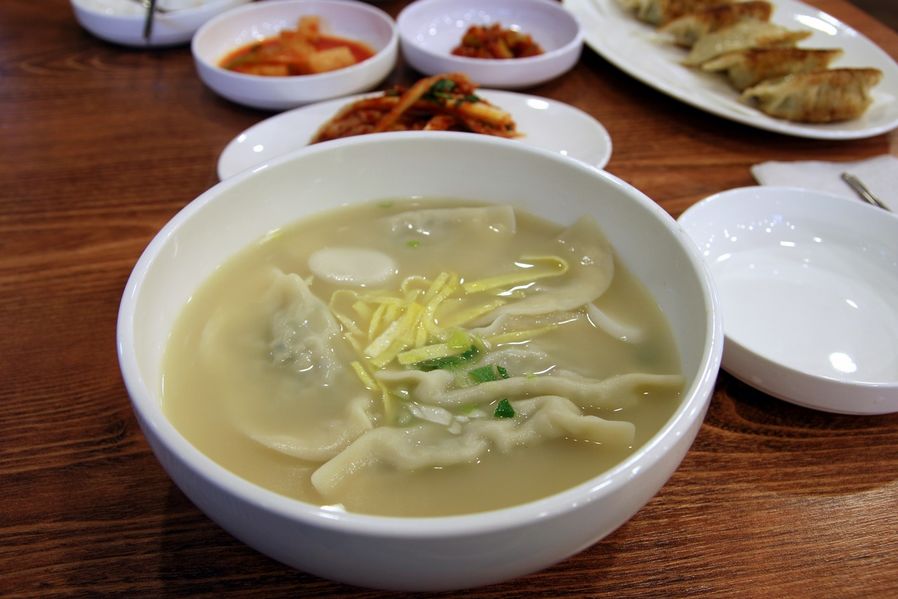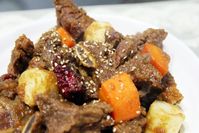1. Ingredients for Mandu
-Primary ingredients: Flour and meat
-Secondary ingredients: Basic seasoning (soy sauce and salt) and other ingredients (tofu, green bean sprout, garlic chive, pumpkin and welsh onion)
2. Taste evaluation
-Spicy: :☆☆☆☆☆
-Salty: ★★☆☆☆
-Sweet: ★☆☆☆☆
-Sour: ☆☆☆☆☆
-Tastes of vegetables: ★★★☆☆
3. Introduction to Mandu(dumpling)
Mandu
is deeply rooted in Korean people’s lives used as snacks, meals or
ingredients for haute cuisines. It’s made by placing a filling of
ground meat and vegetables onto a thinly rolled wrapper, sealing the
edges, and boiling or frying it.
The flavor is plain, not so spicy or salty, that is loved and enjoyed by everyone from small kids to old people. Mandu is not Korean traditional food. There are similar ones in the world such as Mantou and Bāozi in China, Jiaozi in Japan, манты in Uzbekistan, Mantı in Turkey and Ravioli in Italy.
countries through Silk Road and it’s passed down to Korea through China.
Mandu
was loved in cold regions in the North. The main ingredients for
Mandu, which are tofu, pork or green bean sprouts, go bad so easily
that people in the South weren’t be able to eat them often.
Mandu
was preferred in cold winter in cold northern area due to its storage
matter and it’s a must-eat food on the New Year’s Day. Dumpling
soup, which is meat stock with dumplings in it, is one of festive
dishes for the New Year.

Canon EOS 550D | f/3.2 | iso 250 | 2015:03:05 12:00:23 | Flash did not fire, compulsory flash mode | 44mm
Mandu is made by spreading thin batter, putting seasoned ground meat along with tofu, pumpkin, garlic chive and green bean sprout, and frying or boiling them altogether.
The ingredients used in the dumplings vary by area, family or season.
Korean dumplings are very chewy because the batter is kneaded for a long time. And it is spread very thinly that you can feel the strong flavor of ingredients inside.
And normally the filling is too big to put it in your mouth at once.
It’s enjoyed by most of Koreans so you will find it easy on the streets at cheap prices or buy frozen ones for convenience.
However, if you want to taste the decent version of Korean Mandu, you’ll have to find special restaurants that use the recipes in the North.
As mentioned above, Mandu was developed in cold northern area and dumpling skin is traditionally made by hand. It’s characterized by its light flavored sauce that allows you to taste the original flavors of ingredients because of the proper composition ratio of meat and vegetables.
Mandu sold on the streets has more vegetables than meat and even specialized restaurants cook Chinese-styled dumplings.
You will easily find dumplings in other countries so you should try Korean-style Mandu that’s fully filled with ingredients.
4. Kinds of Mandu
You’ll
notice that dumplings vary by the ingredients of filling such as
Gogi-mandu(meat dumpling), Chaeso-mandu(vegetables dumpling),
Kimchi-mandu and so on, and by recipe like Twigim-mandu(fried
dumpling), Jjin-mandu(steamed dumpling) and Mul-mandu(boiled
dumpling).
What Koreans usually enjoy is steamed or fried Gogi-mandu and Kimchi-mandu.
Gogi-mandu(meat
dumpling) is made by putting pork or beef in the skin along with
tofu, chopped green bean sprouts and garlic chives.
Kimchi-mandu
is quite spicy as it contains chopped Kimchi and pork inside.
Mandu
also goes well with different types of soup.
There’s
one type of soup called Mandu-guk (dumpling soup) that has dumplings
in meat or anchovy stock. And you could also put them in ramen
noodles, Kalguksu(knife-cut noodles) or Jeongol(hot pot).

Canon EOS 550D | f/4.0 | iso 160 | 2013:04:18 16:14:23 | Flash did not fire, compulsory flash mode | 19mm
5. How to enjoy Mandu even more
Meat dumplings (Gogi-mandu) of all kinds are very common and easy to eat for everybody. Mandu tastes so good when you dip it in spicy soy sauce.
Plus,
Korean dumpling is too big to put it in your mouth at once.
So you’d better wash your hands and use them rather than chopsticks when you try Korean dumplings.
It
is likely to be messy if you use chopsticks because of all chewy
dumpling skin. Instead, you should hold it with both of your hands,
blow on it to cool it down and take a bite if you want to enjoy
Korean-style dumplings.

Canon EOS 550D | f/4.0 | iso 640 | 2013:04:18 16:16:38 | Flash did not fire, compulsory flash mode | 35mm










